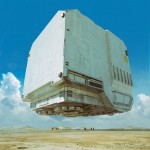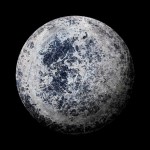 |
SpaceX plans to launch thousands of satellites into space for the firm’s Starlink high-speed satellite internet network. While the Starlink service aims to bring high-speed internet to locations where it is otherwise unavailable or prohibitively expensive, Independent is reporting that hundreds of astronomers have expressed concerns that Starlink’s satellite array will have an impact on astronomy and slow down scientific discoveries.
A report by the Satellite Constellations 1 (SATCON1) workshop stated that constellations of satellites in the night sky are problematic for ground-based observations, including those utilizing optical and infrared technologies. The research underpinning the workshop’s report included input from ‘more than 250 astronomers, satellite operators and dark-sky advocates.’
SATCON1 co-chair Connie Walker from the National Science Foundation’s (NSF) NOIRLab said of the report, ‘Recent technology developments for astronomical research – especially cameras with wide fields of view on large optical-infrared telescopes – are happening at the same time as the rapid deployment of many thousands of low-Earth-orbiting satellites (LEOsats) by companies rolling out new space-based communication technologies.’
 |
| Not to scale. Illustration courtesy of NOIRLab / NSF / AURA / P. Marenfeld |
The report concludes that large satellite constellations will impact astronomical research and the general human experience of the night sky, although they find that the impact will range from ‘negligible’ to ‘extreme.’ When Starlink’s first 60 communication satellites launched in May 2019, the impact was felt immediately by astronomers and the satellites were ‘brighter than anyone expected.’ It is not fiscally or scientifically feasible to stop utilizing ground-based astronomy.
While the impact of LEOsats may be negative for astronomers, the introduction of communication services to underserved areas is undoubtedly positive for potential users. The SATCON1 workshop is trying to work with satellite operators to find a solution. In the report, there are two main findings. One is that LEOsats ‘disproportionately affect science programs that require twilight observations, such as searches for Earth-threatening asteroids and comets, outer solar system objects, and visible-light counterparts of fleeting gravitational-wave sources.’ The second finding is that there are at least a half dozen ways to reduce the harm caused to astronomy by large satellite constellations.
 |
| From the SATCON1 workshop report: ‘A wide-field image (2.3 degrees across) from the Dark Energy Camera on the Víctor M. Blanco 4-m telescope at the Cerro Tololo InterAmerican Observatory, on 18 November 2019. Several Starlink satellites crossed the field of view. Image credit DECam DELVE Survey/CTIO/AURA/NSF.’ For many more visual examples of the impact of Starlink satellites on astronomical observations, read the full SATCON1 technical report. |
One of these six ways is to launch fewer or no LEOsats, which is of course an impractical and unlikely solution. More realistically, the workshop found that the impact of LEOsats can be reduced if they are deployed at orbital altitudes no higher than 600 km, satellites are darkened or include sunshades, or are carefully oriented in space to reduce reflections. There may also be ways to reduce the impact of satellite trails with improvements to processing techniques for astronomical images. Further, if satellite owners provide astronomers with accurate orbital information, observers may be able to avoid satellites with their telescopes.
NOIRLab director Patrick McCarthy says of the report’s findings and recommendations that he hopes that they ‘will serve as guidelines for observatories and satellite operators alike as we work towards a more detailed understanding of the impacts and mitigations and we learn to share the sky, one of nature’s priceless treasures.’
The next workshop, SATCON2, will aim to tackle the issues of policy and regulation when it meets in early to mid-2021.
 |
| Image credit: SpaceX / Starlink |
SpaceX plans to launch more than 30,000 Starlink satellites. This represents approximately a doubling of space-based moving objects visible to the naked eye during twilight, according to the SATCON1 report.
Despite there being only about 500 Starlink satellites currently in orbit, the program’s impact has already been felt during significant astronomical events. For example, the comet Neowise made an appearance this summer, something possible only once every 6,800 years, and Starlink satellites disrupted observation for many.
 |
| Image credit: SpaceX / Starlink |
Thus far, SpaceX has taken steps to reduce the impact of its satellites. The space exploration firm has utilized a twisting technique to make the solar panels on the satellites less reflective. It has also explored painting reflective surfaces black and using sunshades. SpaceX has worked with the American Astronomical Society (AAS), National Radio Astronomy Observatory (NORAF) and the Green Bank Observatory (GBO) in pursuit of a solution to the issue of LEOsat visibility.
SpaceX stated ‘We’ve taken an experimental and iterative approach to reduce the brightness of the Starlink satellites. Orbital brightness is an extremely difficult problem to tackle analytically.’
For astronomers, the SATCON2 workshop cannot come soon enough. Professor Tony Tyson of the University of California, Davis, says that ‘…no combination of mitigations can completely avoid the impacts of satellite trails on the science programs of the coming generation of optical astronomy facilities.’
Articles: Digital Photography Review (dpreview.com)















You must be logged in to post a comment.